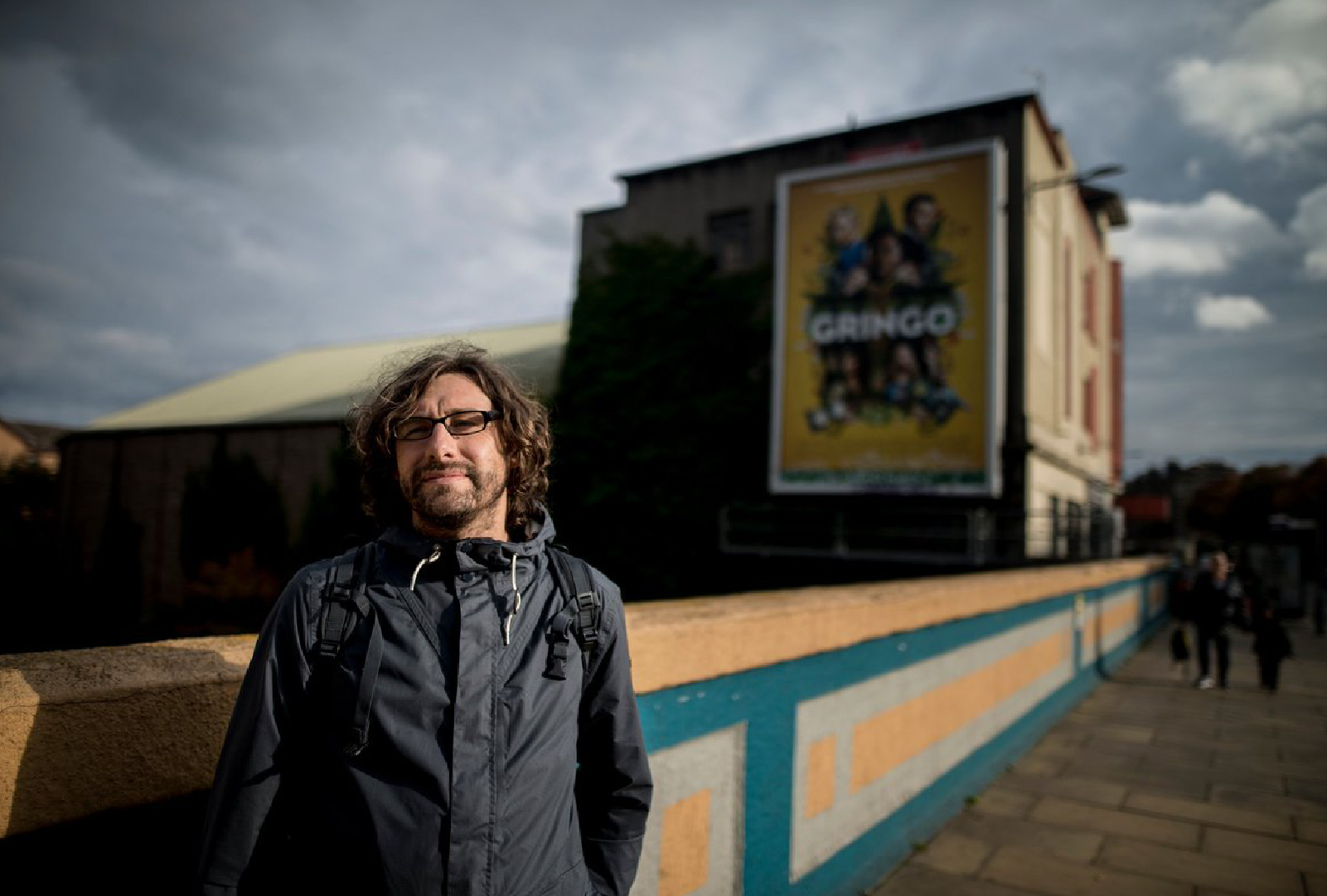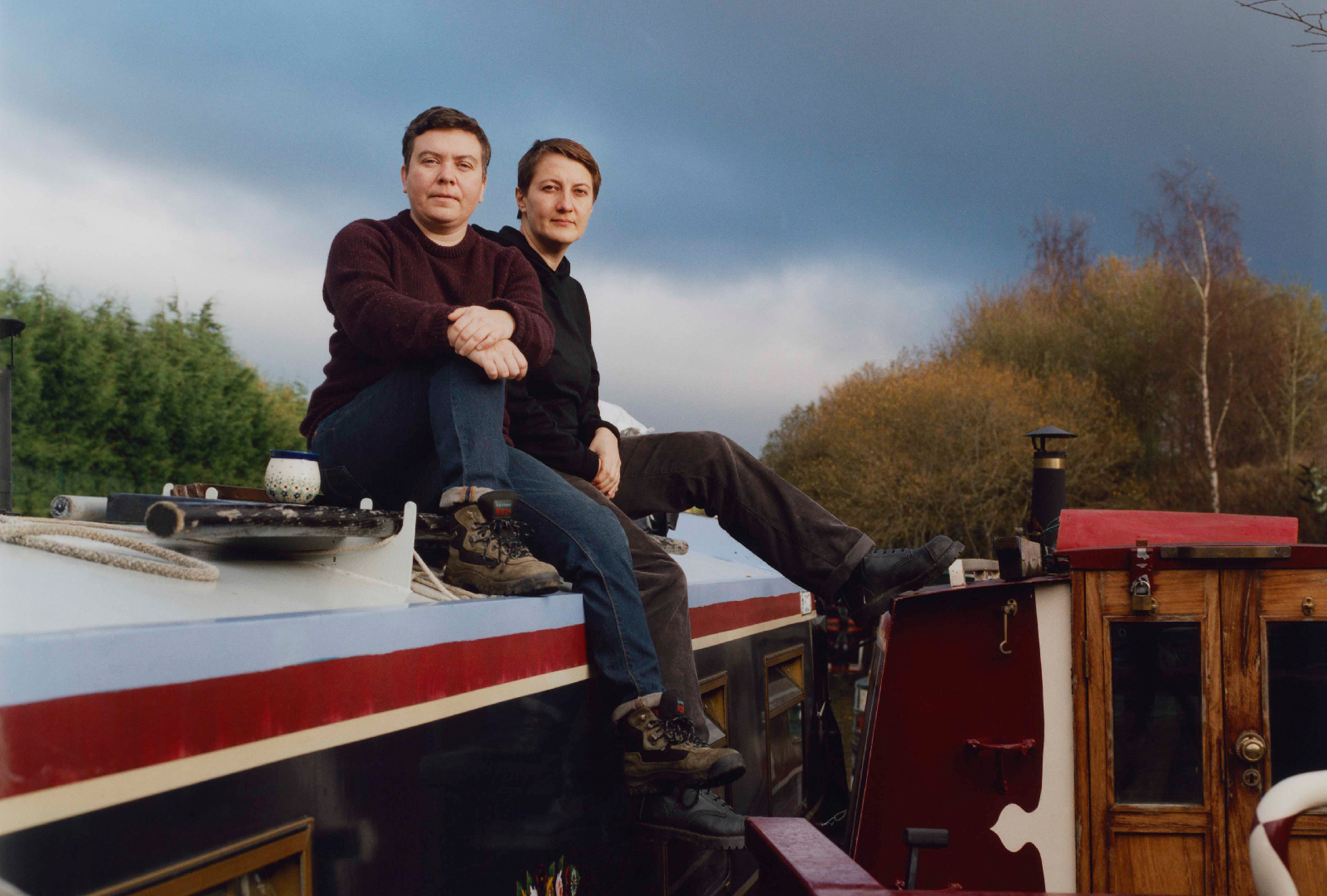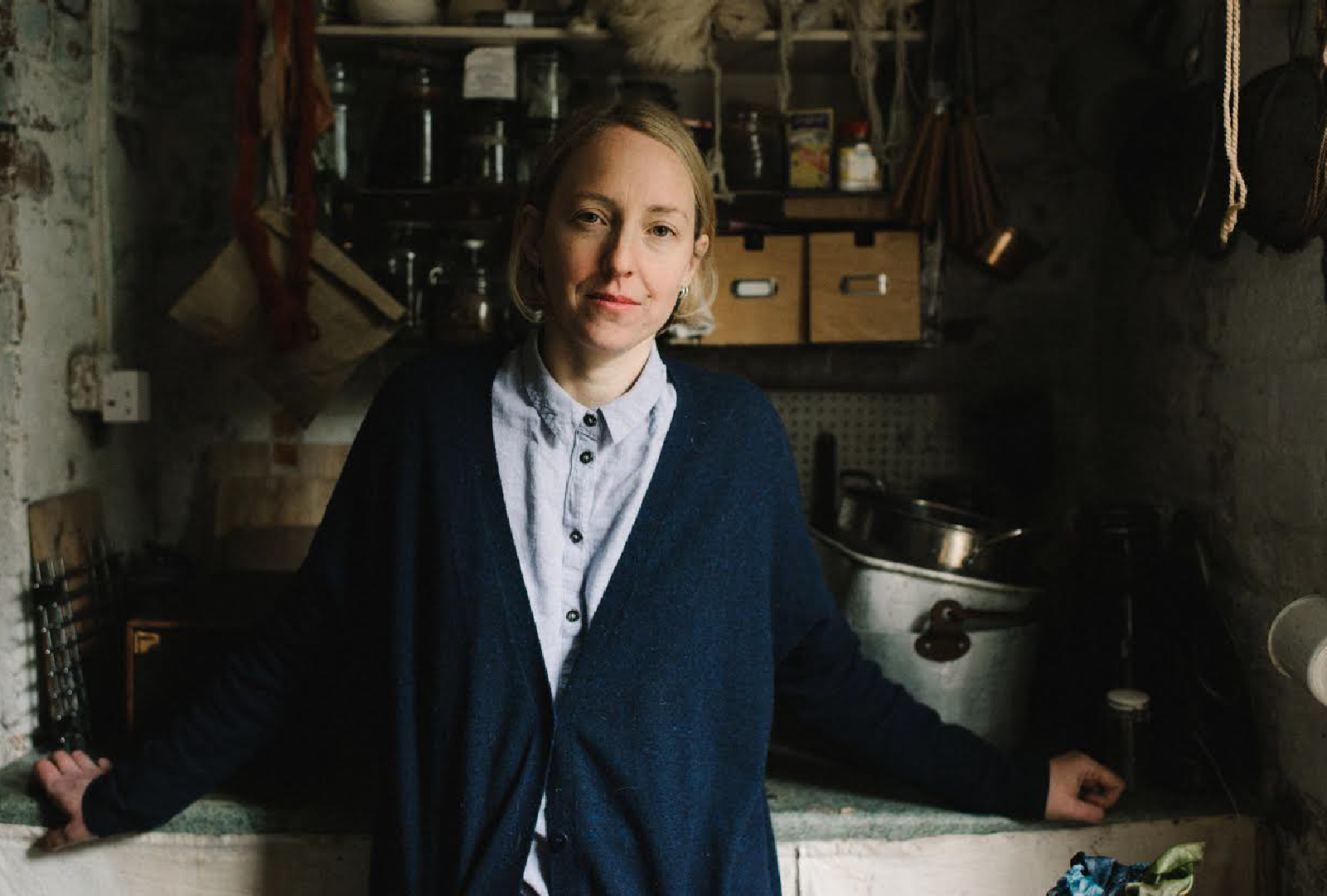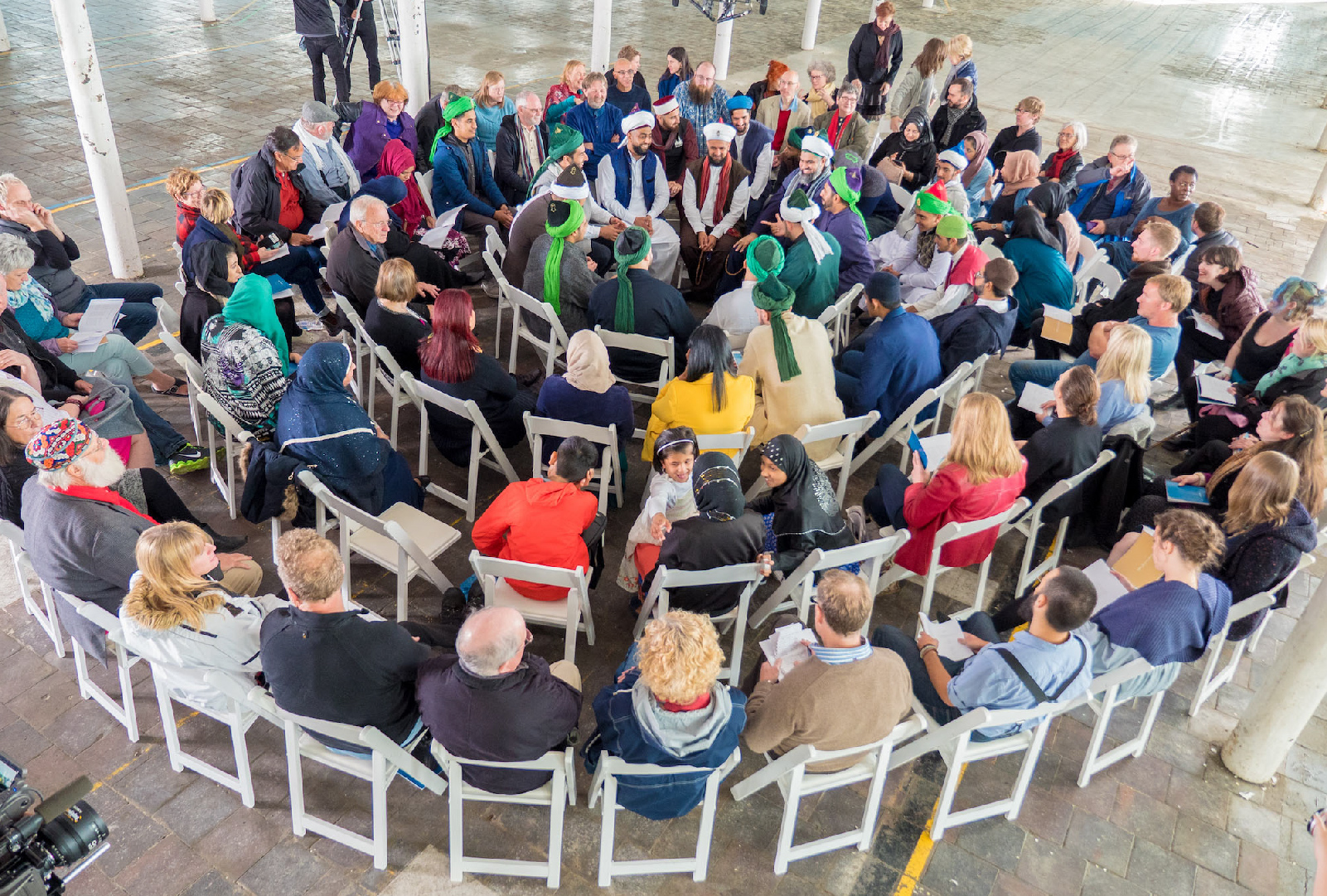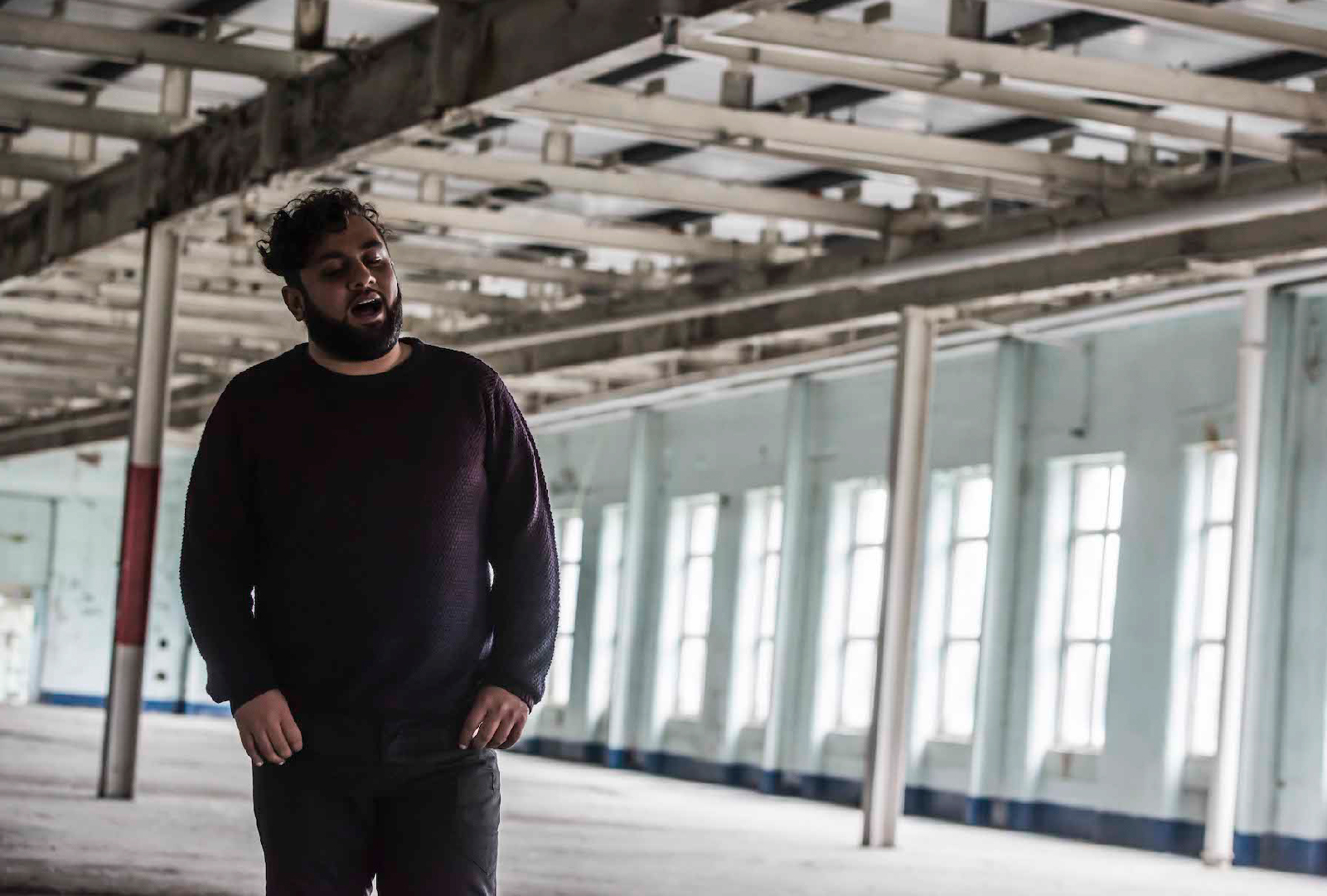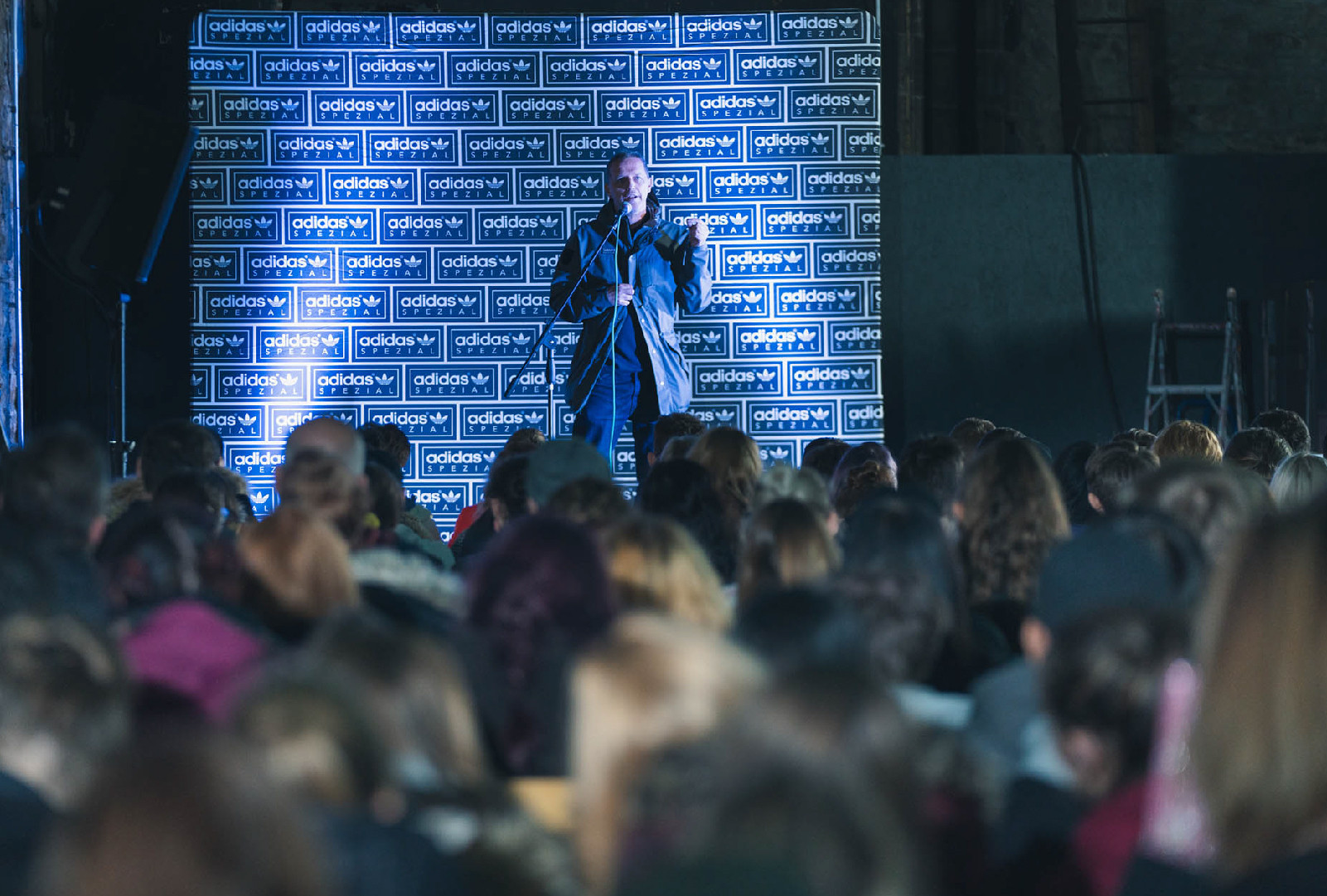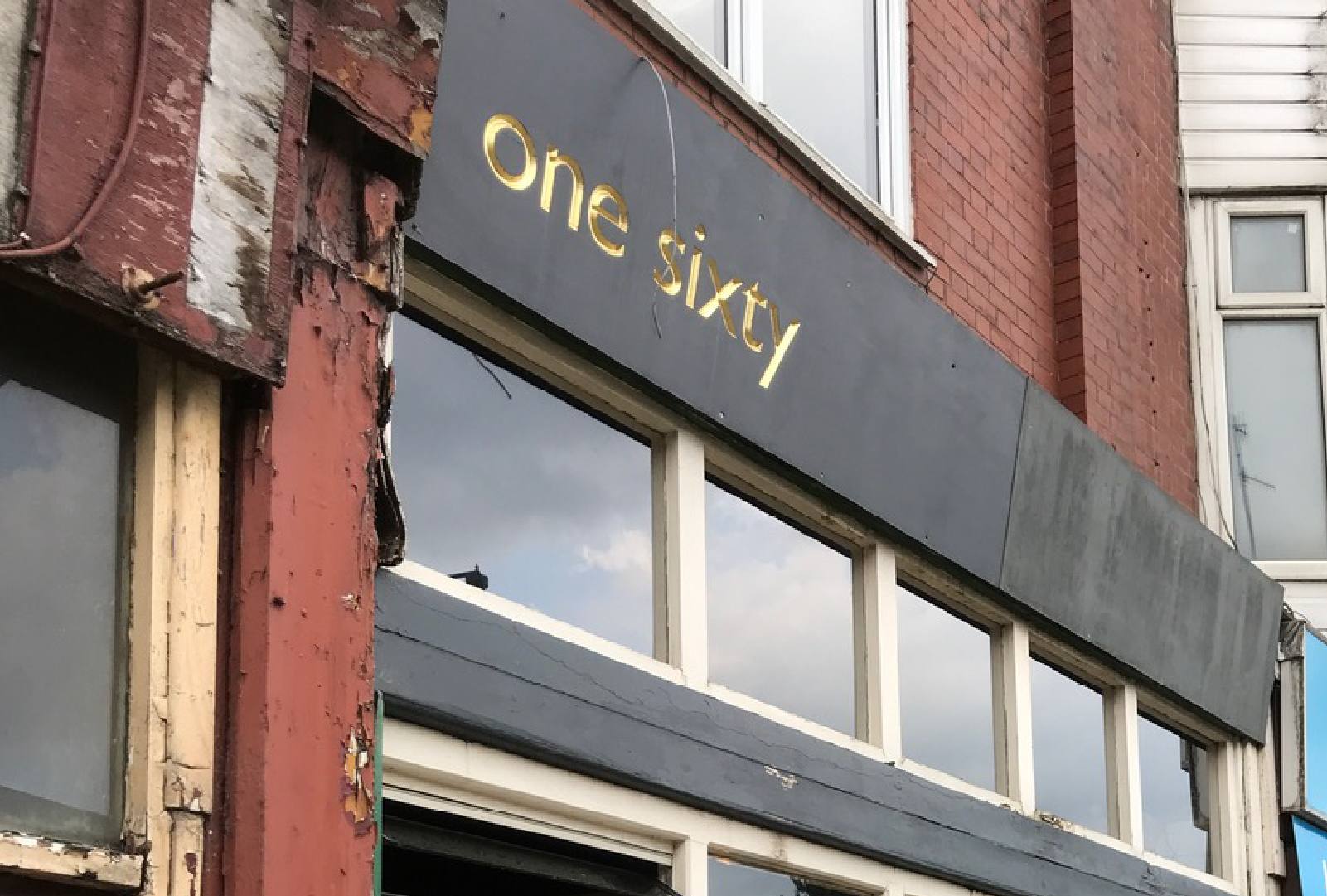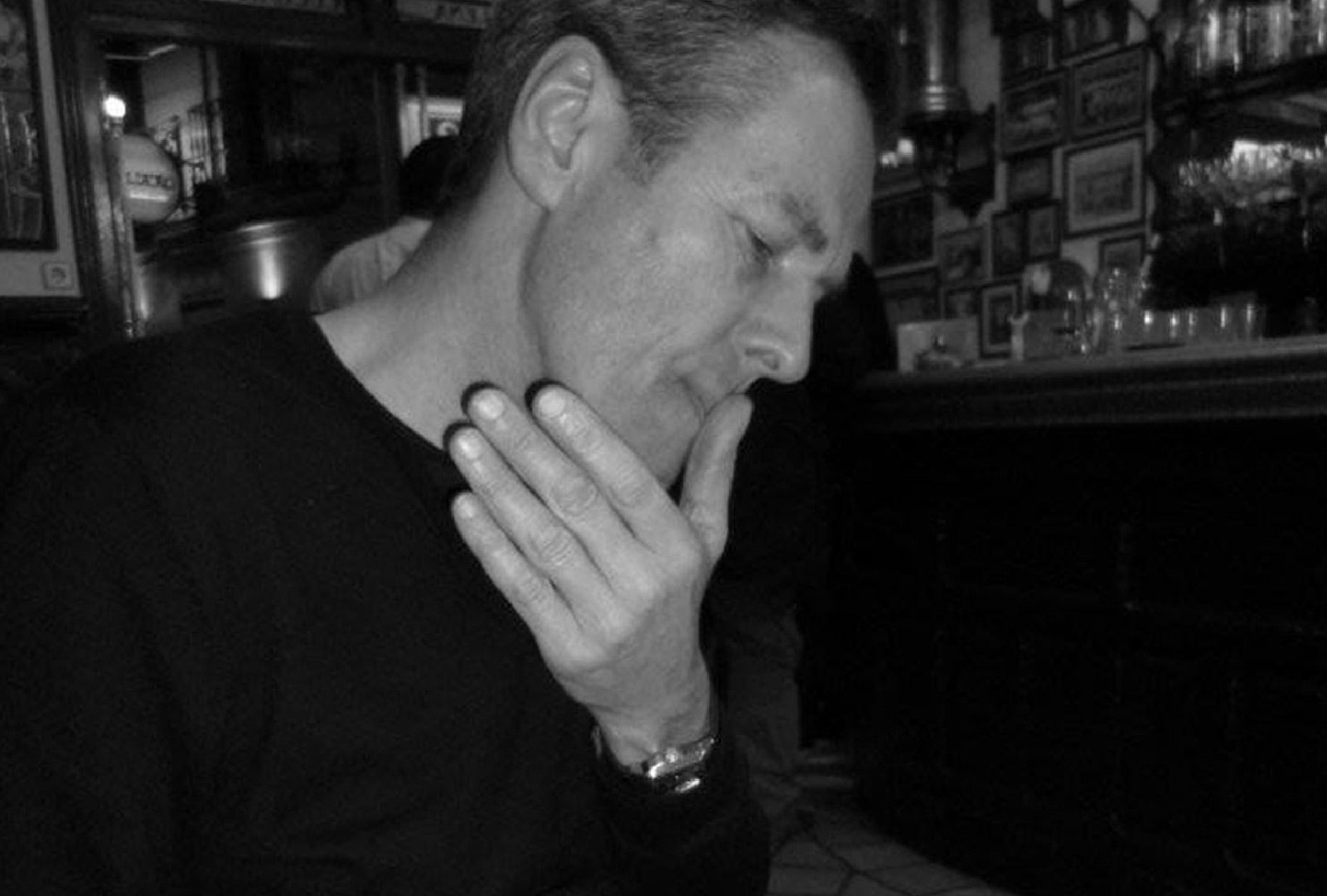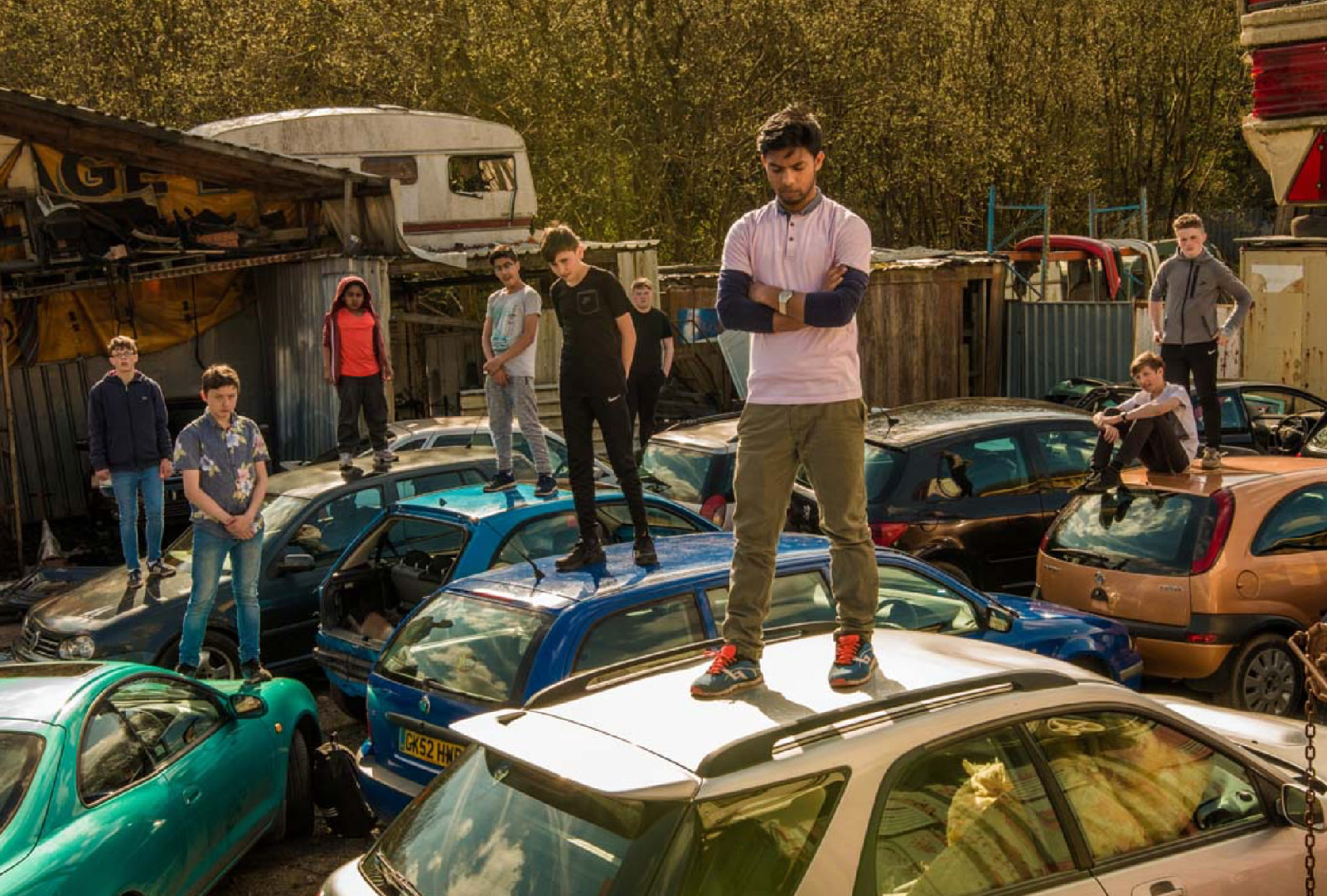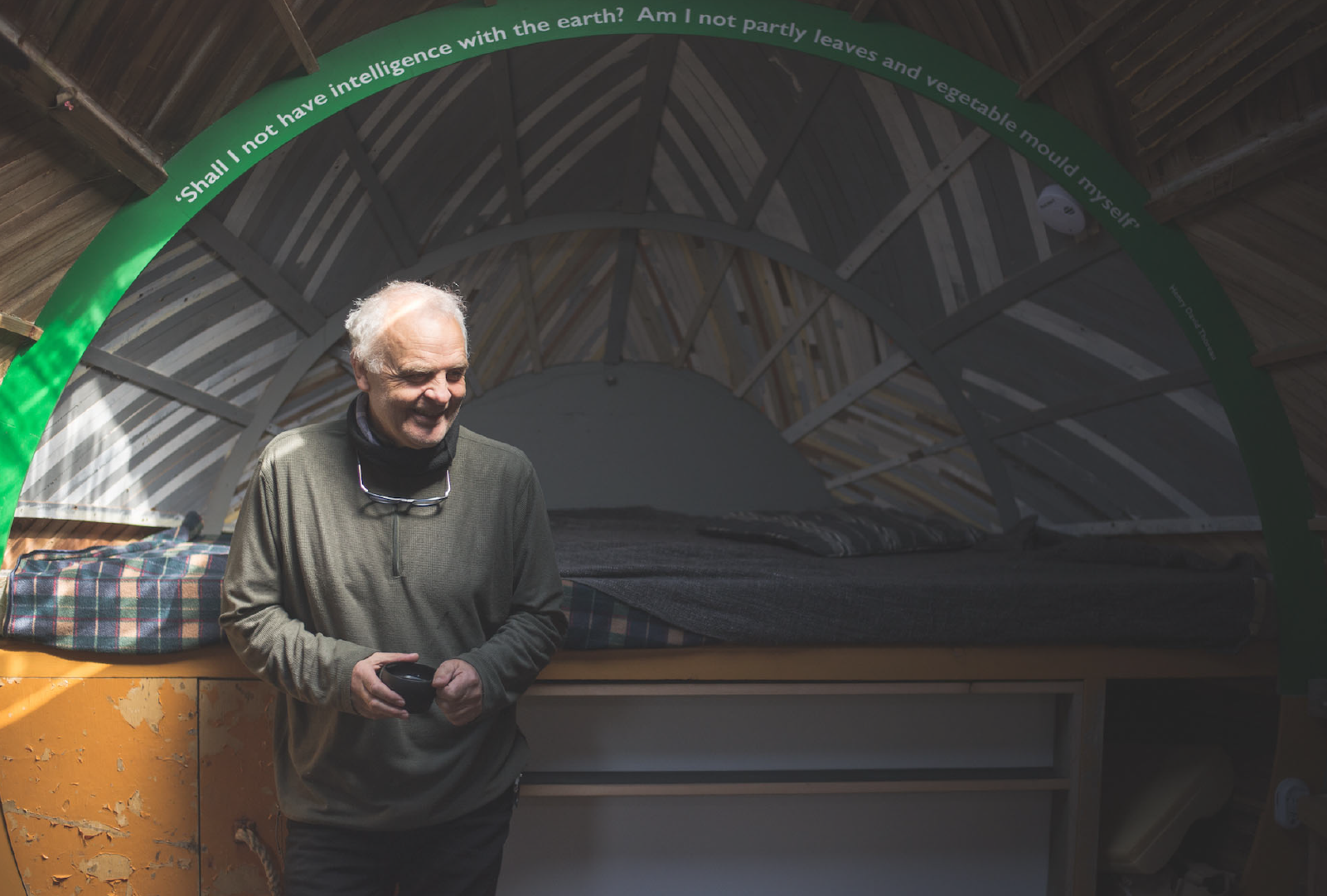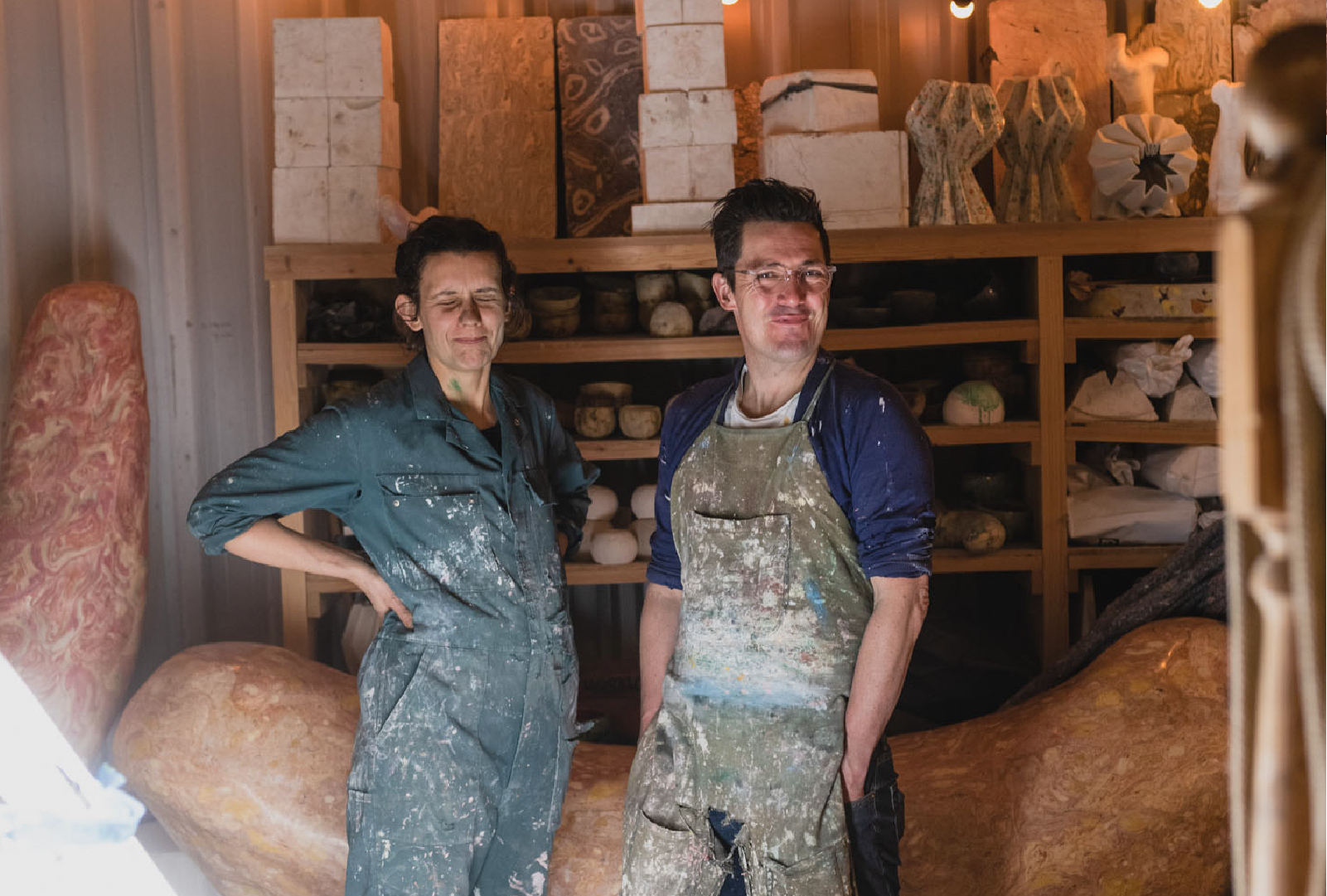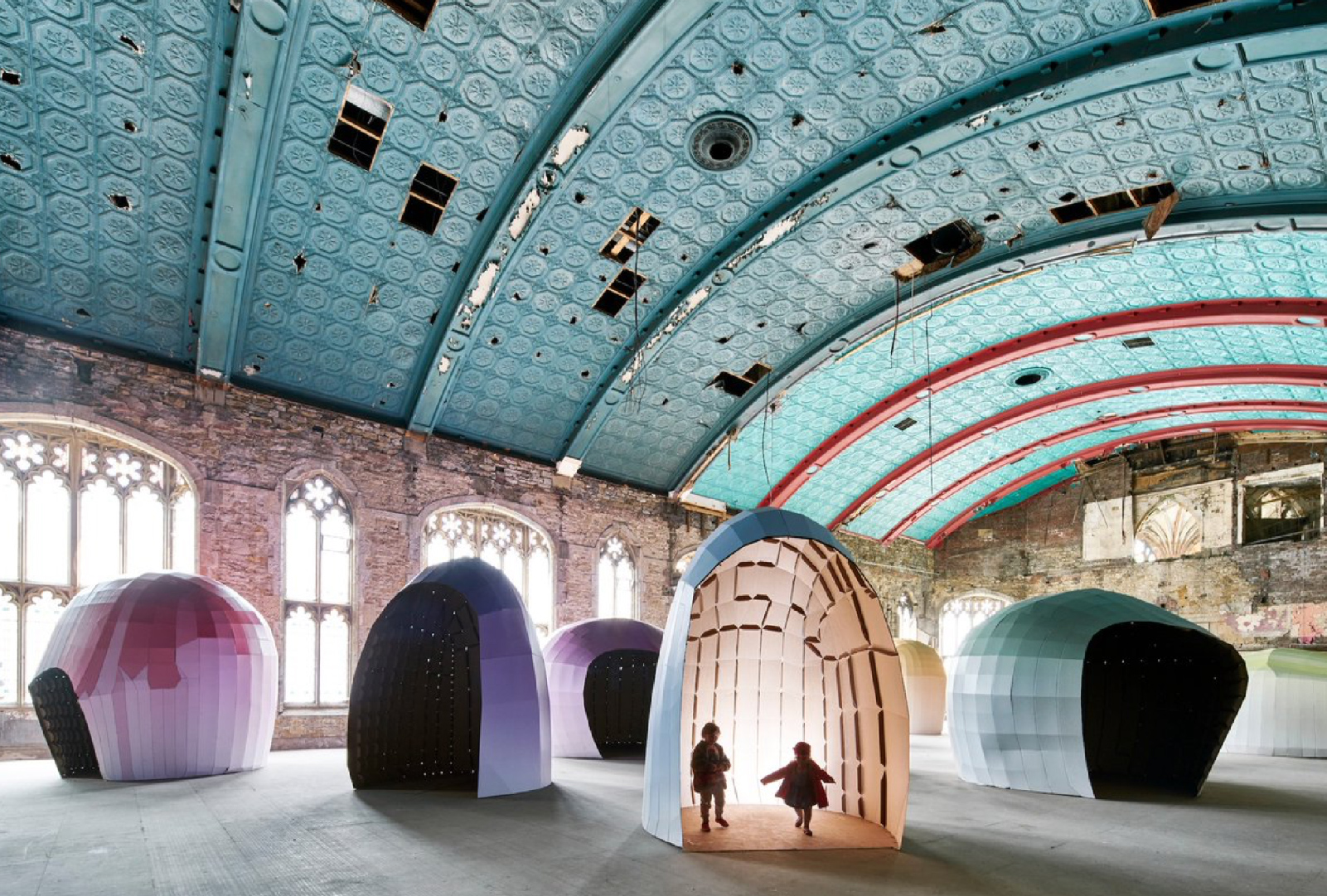Jamie Holman
IN Conversation
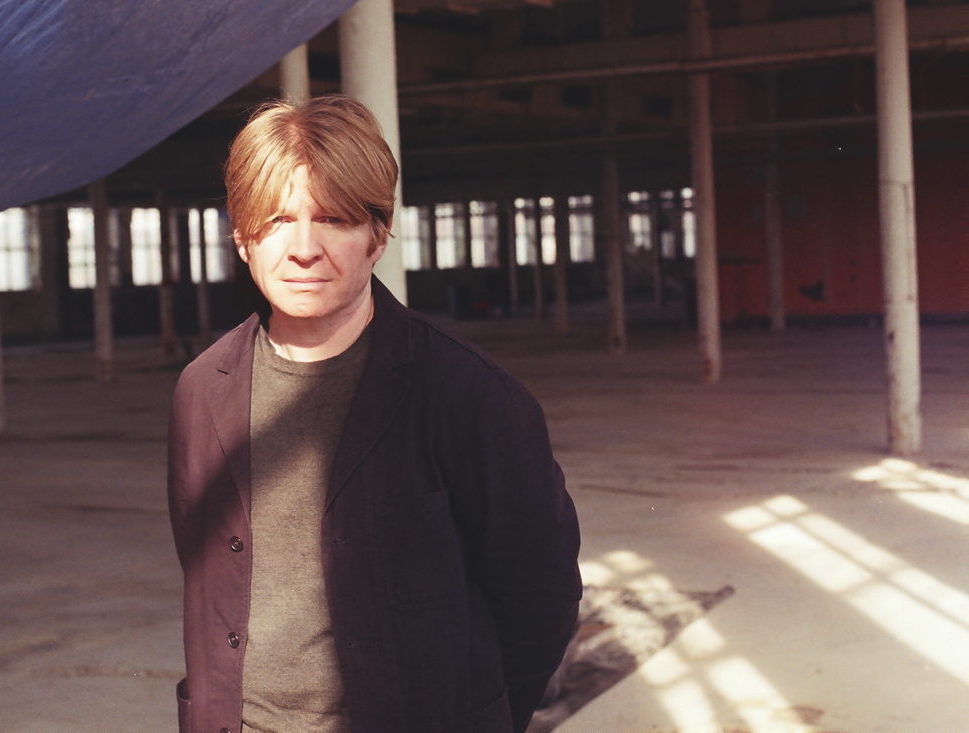
Photographer Jack Hartley
Jamie Holman is an artist, director of Prism Contemporary in Blackburn, a non executive director of the National Festival of Making and is currently associate artist for The British Textile Biennial 2021.
Holman leads Fine Art at Blackburn College, and lives in Lancaster, working from a studio in Blackburn. Holman's practice is often collaborative and challenges existing notions of heritage, craft and contemporary fine art practice. Holman was artist in residence for the British Textile Biennial 2019 and has exhibited and published research internationally.
Super Slow Way exists, in part, because Blackburn, where my studio is located, where I teach and where I’m from, is classed by Arts Council England, as an area of ‘low engagement with art and culture’. Blackburn with Darwen was actually identified as the borough with the very lowest arts engagement in the country.
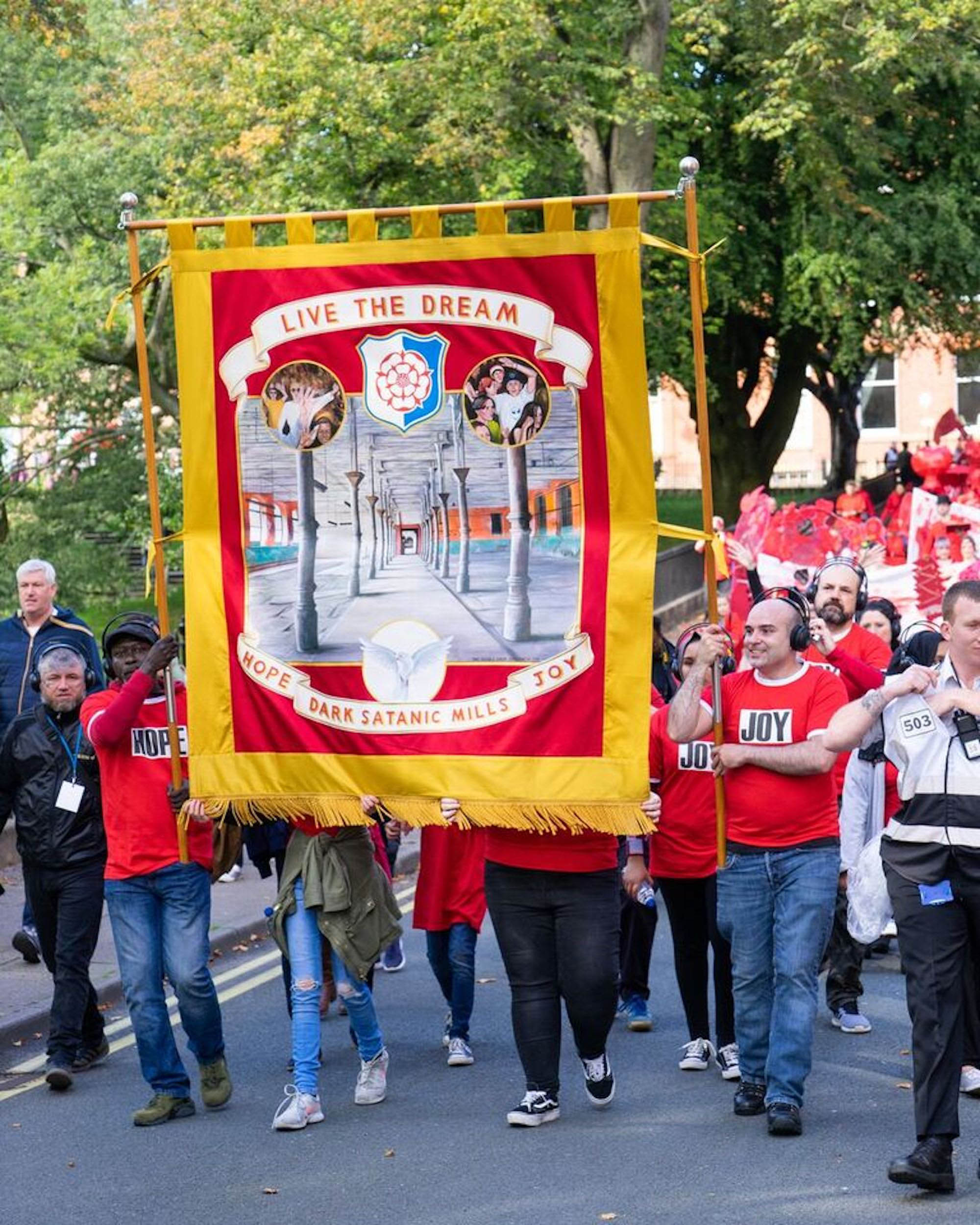
Lancashire Encounters Parade, 2018 Preston Live The Dream Banner – Jamie Holman
PHOTOGRAPHER Jamie Holman
We’ve also been lauded as the area with the highest number of ‘take-aways’ per person. I know this because I saw it on the news and I read it in the newspapers. The headline declared ‘Chips and burger for a quid – welcome to the take-away capital of Britain.’ I read the article, published by the Guardian, and trawled the comments pages online, where people who had never been to the town confirmed its ‘shithole’ status and posted helpful healthy recipes for thick, poor, northern people like me and used words like ‘pantry’ and ‘mung bean’ like they were introducing Latin to the natives of some distant shore.
I just thought that it sounded like a pretty good deal for a quid.
The sum of Blackburn: ‘The lowest engagement in art in the country,’ plus the ‘most takeaways in the country.’ This already paints a bleak picture, but it turns out Blackburn is also a ‘town divided,’ a town of parallel communities and a hot-bed of racial and religious tension according to two (TWO!) Panorama programmes.
With poor diet, communities who won’t integrate and people just too stupid to appreciate art and culture, along comes ‘Trouble on the estate,’ another Panorama scoop, where the brave reporters “visit a housing estate in Blackburn, learning what it is like to live there. The programme follows families, children and police, and goes undercover with the drug dealers.”
No art, fast food, drug dealers, council estates and communities at war.
Blimey. What a shithole.
Thanks BBC, thanks The Guardian and thank you Arts Council England for alerting me to how bad the place I’m from really is.
Who knew?
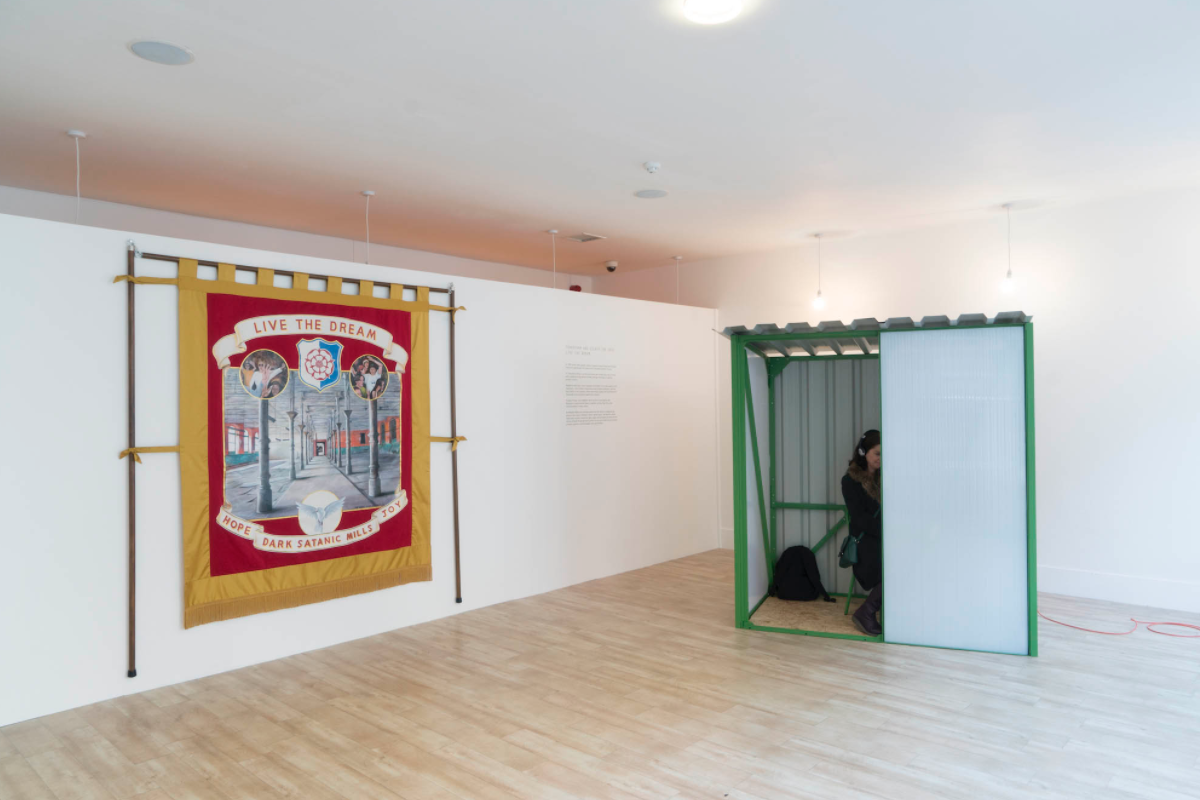
Transform and Escape the Dogs, 2019 Blackburn. Artist Jamie Holman. Presented as part of British Textile Biennial 2019
PHOTOGRAPHER Lee Smillie
This is where my relationship with Super Slow Way begins. It has to; this is the context in which we have collided. They have come to deliver art and culture in an area of low engagement and I am an artist living and working in the same area.
These news reports and broadcasts are only versions of Blackburn. They are snapshots of communities and individuals, captured through a particular lens at a particular time. Like all places, Blackburn is made up of diverse communities, hidden spaces, shared spaces and contested spaces. We all have versions of the places we live and these versions of the town are different from mine. My version of Blackburn is a very different place to the Blackburn I’m confronted with in the media, or in the metrics that purport to measure our communities’ engagement in art and culture. My work with Super Slow Way fundamentally proposes that the metrics are wrong. It is not the lack of engagement with art and culture that is the issue, it is in fact defining what constitutes art and culture in the first place.

My version of Blackburn is a very different place to the Blackburn I’m confronted with in the media, or in the metrics that purport to measure our communities’ engagement in art and culture.
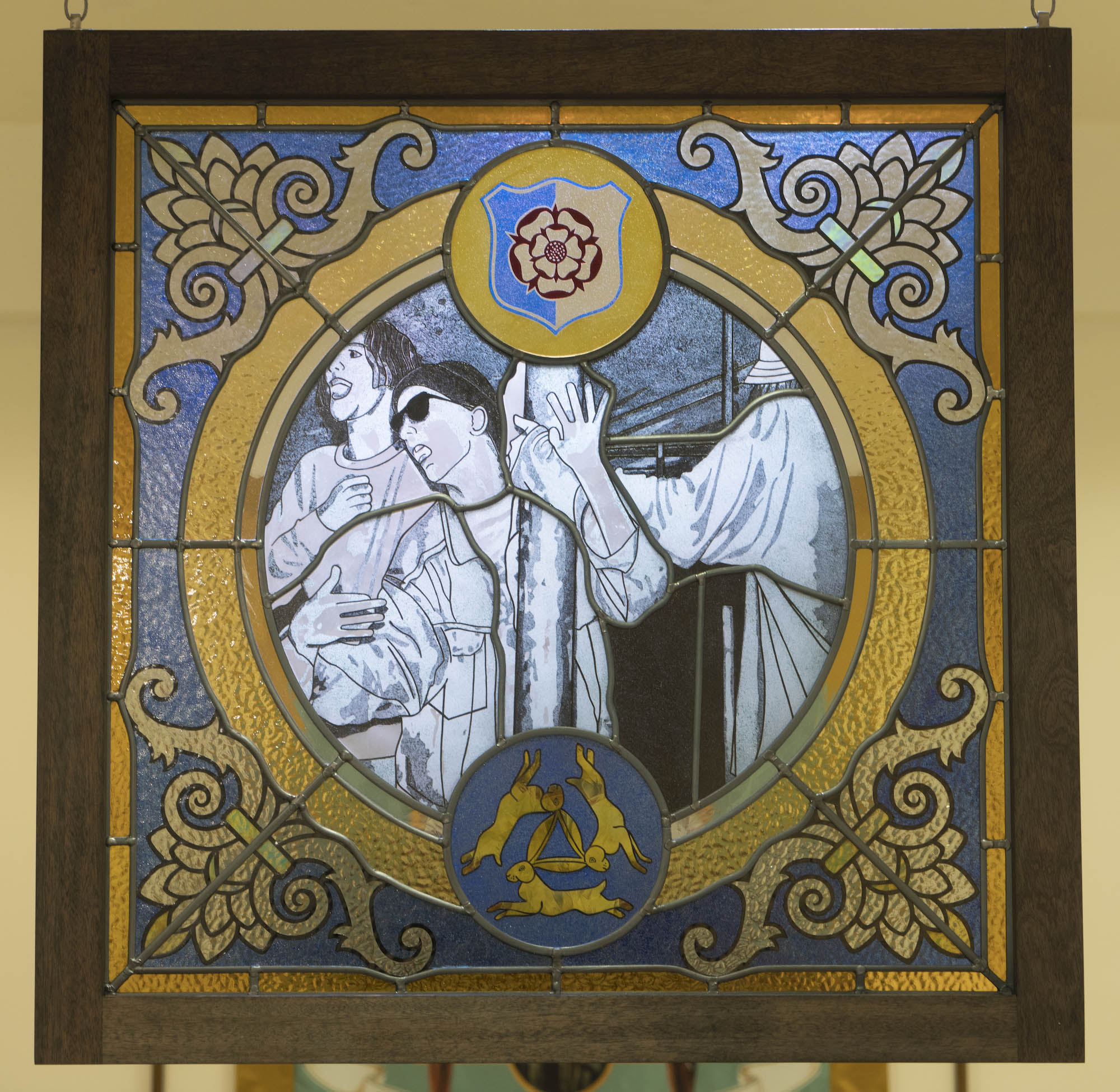
Transform and Escape the Dogs, 2019 Blackburn. Artist Jamie Holman. Presented as part of British Textile Biennial 2019
Photographer Lee Smillie
When I was interviewed for artist in residence for the British Textile Biennial (BTB) 2019 in partnership with the Harris Museum, Preston and Blackburn Museum, I was clear that I wasn’t an artist with a textiles practice, but that I was interested in responding to the theme, ‘The Politics of Cloth.’ In particular, the impact the industrial revolution has had on art and culture in towns like Blackburn. It was a strange interview in many ways, and defines the way that I have worked with Super Slow Way since.
I arrived at my pitch and declared that I didn’t know what I was going to make.
This is not the best strategy for any interview and more nervous commissioners are reluctant to commit to an artist who states that they don’t have any ideas yet. As pitches go, it’s often disastrous. (I write this from experience.) What happened during that interview however, was an intense hour talking about adidas ‘Sett End’ trainers, mill poets, prison blankets and Super Slow Way in the thirtieth anniversary year of the legendary Acid House party known locally as ‘Live the Dream’. This constitutes ‘The Politics of Cloth’ in the area I’m from and its links to heritage, to class and to the creativity that exists beneath a cultured radar.
This then was the basic proposition; that art and cultures exist but may not be visible and, if not visible, then they can’t be measured. I was interested in what was in the museum collections, as these museums sprang up as a consequence of the new wealth that some gained thanks to cotton weaving but I was also interested in what should be in the collections of the future. I thought then, and still do that the adidas Spezial range designed by Gary Aspden from Darwen and the designer wear that adorns our football terraces and dance floors, should be in the collections of our museums, as part of our textile heritage. These clothes and shoes memorialise cultures that are often hidden in plain sight.

This then was the basic proposition; that art and cultures exist but may not be visible and, if not visible, then they can’t be measured.
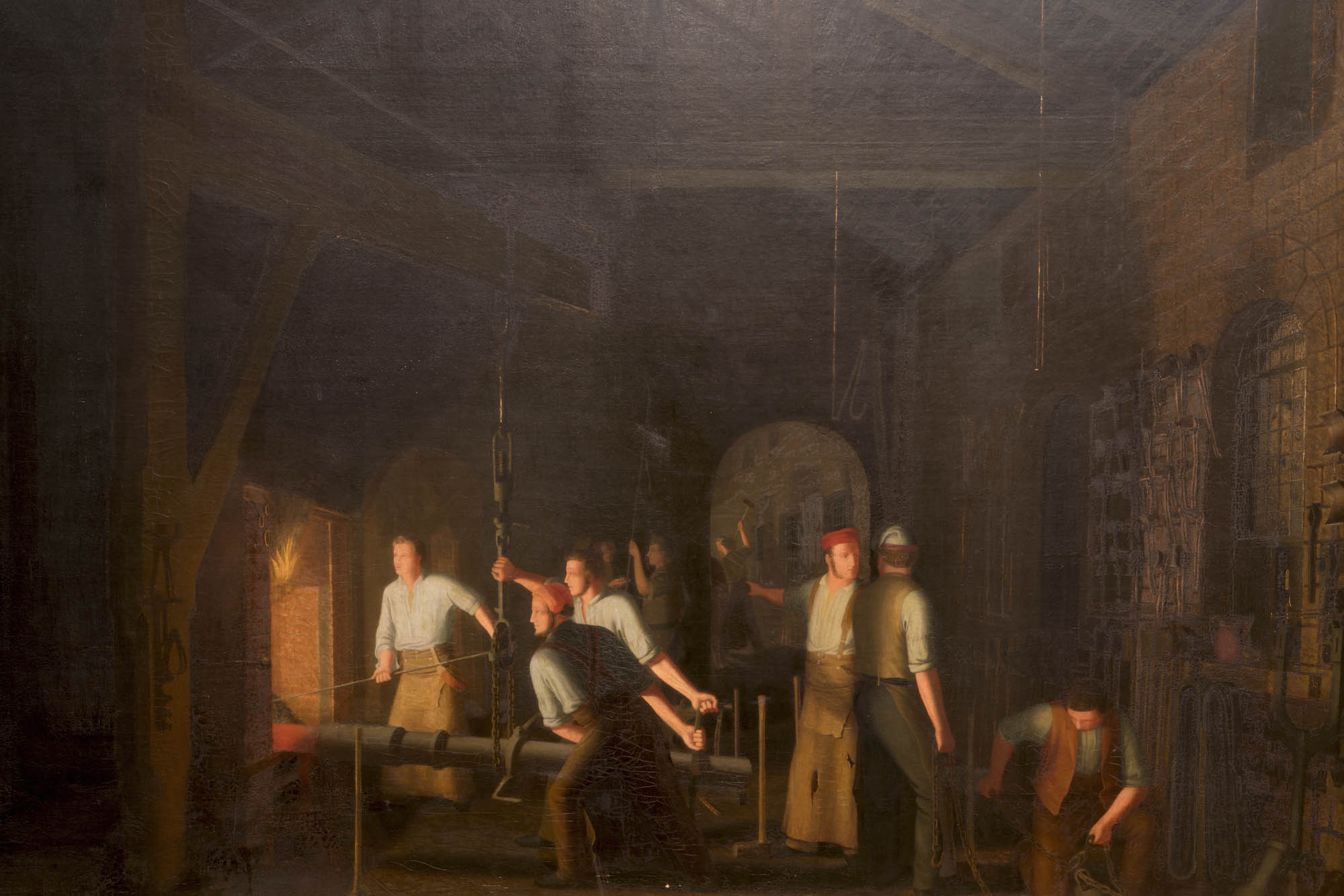
James Sharples - The Forge 1849, Blackburn Museum and Art Gallery
Photographer Lee Smillie
It is interesting that Panorama never visited the local football club or that Arts Audiences Insight characterised many of the same communities and cultures that stand on the terraces as ‘A quiet pint with the match.’
“A quiet pint with the match are content with life and are not seeking change. They spend much of their leisure time at home, or you might find them having a drink with friends at the local pub."
“Their arts:
- attending arts events or participating in arts activities is not a part of the current lifestyle of the ‘A quiet pint with the match’ segment. Many describe themselves as not interested in ‘the arts’ and don’t think themselves to be creative
- they don’t go to arts events or do creative activities because it costs too much, they feel it’s not for them, have a lack of confidence.”
My work proposes that the very communities defined as disengaged, are actually the creators of art and culture, and always have been. This includes those labelled ‘A quiet pint with the match.’

My work proposes that the very communities defined as disengaged, are actually the creators of art and culture, and always have been.
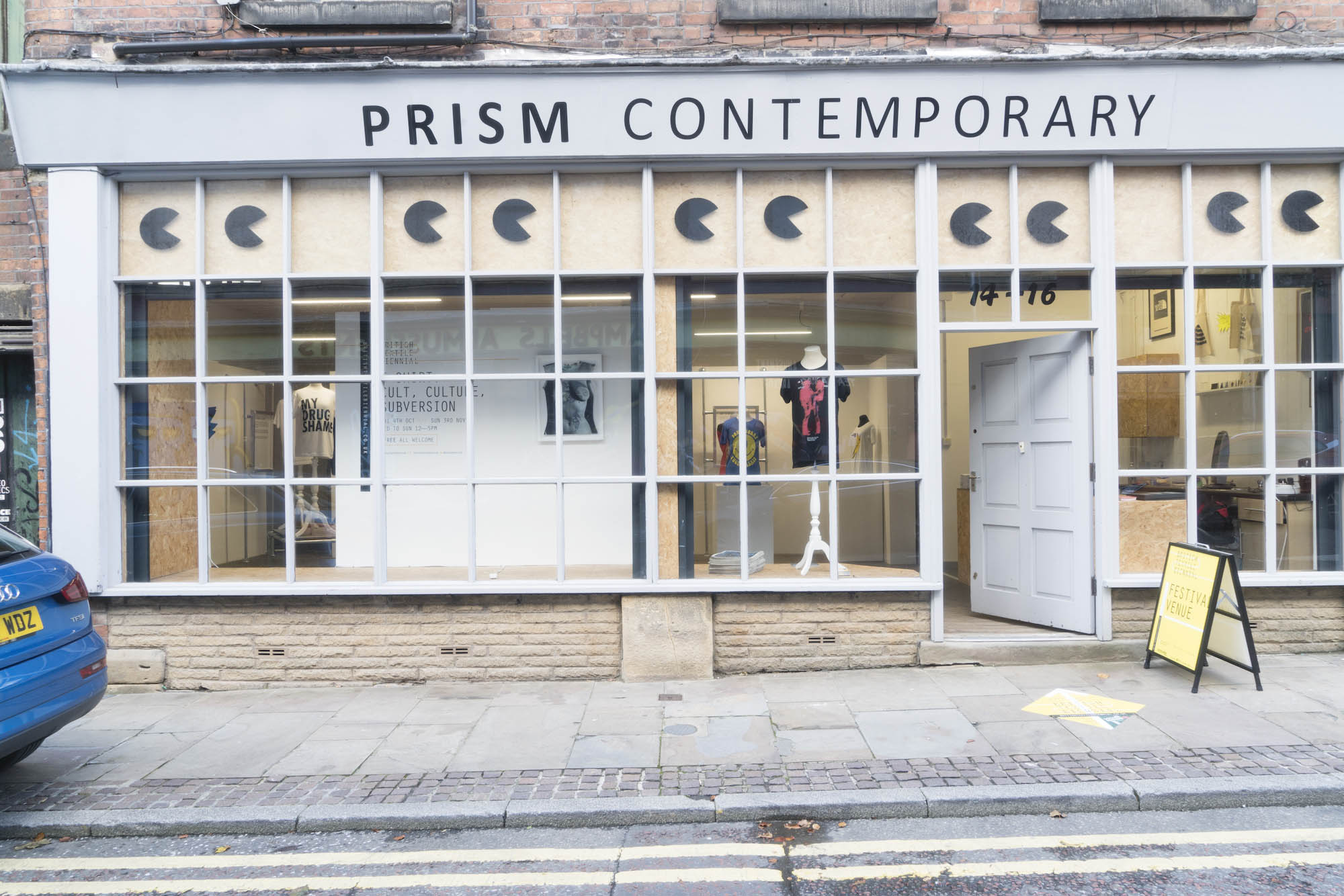
PRISM CONTEMPORARY, BLACKBURN PRESENTING cULT | CULTURE | SUBVERSION DURING British Textile Biennial 2019.
PHOTOGRAPHER Lee Smillie
Something resonated in that interview conversation for BTB that slowly developed into a collaborative process between Super Slow Way and myself. It was a process of ‘not knowing’ that was based on trust and a shared ambition to do something to disrupt the flow of media narratives about the town.
During the eighteen months I was in residence, which in itself is unusual as it is rare to get this amount of time to develop new work, the focus of my research developed into an exploration of the industrial spaces, the mills, forges, factories and workshops of Lancashire and their potential to create a backdrop for ‘uncultured creativity’. These spaces powered the British Empire and transformed this country in the process also transforming the people who worked in them, who gathered and lived side by side because of them.
‘The Politics of Cloth’ became an extended arc of research that focussed on transformation. This transformation was evident in a broad spectrum of social, political and cultural change across the centuries here: the move from the rural to the industrial, rural folklore and the Lancashire witches, the suffragettes, trade union formation, temperance, poetry, painting, the foundation of the football league and the films of Mitchell and Kenyon. All of these things were happening in Blackburn and luckily many were caught on those films. It was in the Mitchell and Kenyon film archives that I saw thousands of people pouring out of factories and mills, mirroring the party convoys of the late nineteen eighties and watched some of the earliest football matches with crowds gathering to cheer and chant; a terrace culture emerging, captured on the earliest films we have.

Over a century later, these transformative spaces inspired the great great grandchildren of those millworkers to return and reclaim the environments where their ancestors worked, in their thousands, to dance
This transformation was equally evident on a personal level, in the lives of the ghostly figures leaving mills or gathering in Blackburn. Perhaps this transformative environment is what influenced William Billington in the 1800s to leave the Mills of Brookhouse and write poetry or James Sharples, the painter to wake in the early hours to paint before going to work in the forges of Lancashire. Or some of those mill workers to vote to support President Lincoln and the abolition of slavery, unknowingly transforming the modern world in the process and triggering a sequence of events that would inspire Mitchell and Kenyon to create their first narrative fiction film and provide the world with its first western.
Over a century later, these transformative spaces inspired the great great grandchildren of those millworkers to return and reclaim the environments where their ancestors worked, in their thousands, to dance – playing their part in a global, cultural revolution – not a bad cultural heritage for a shithole!
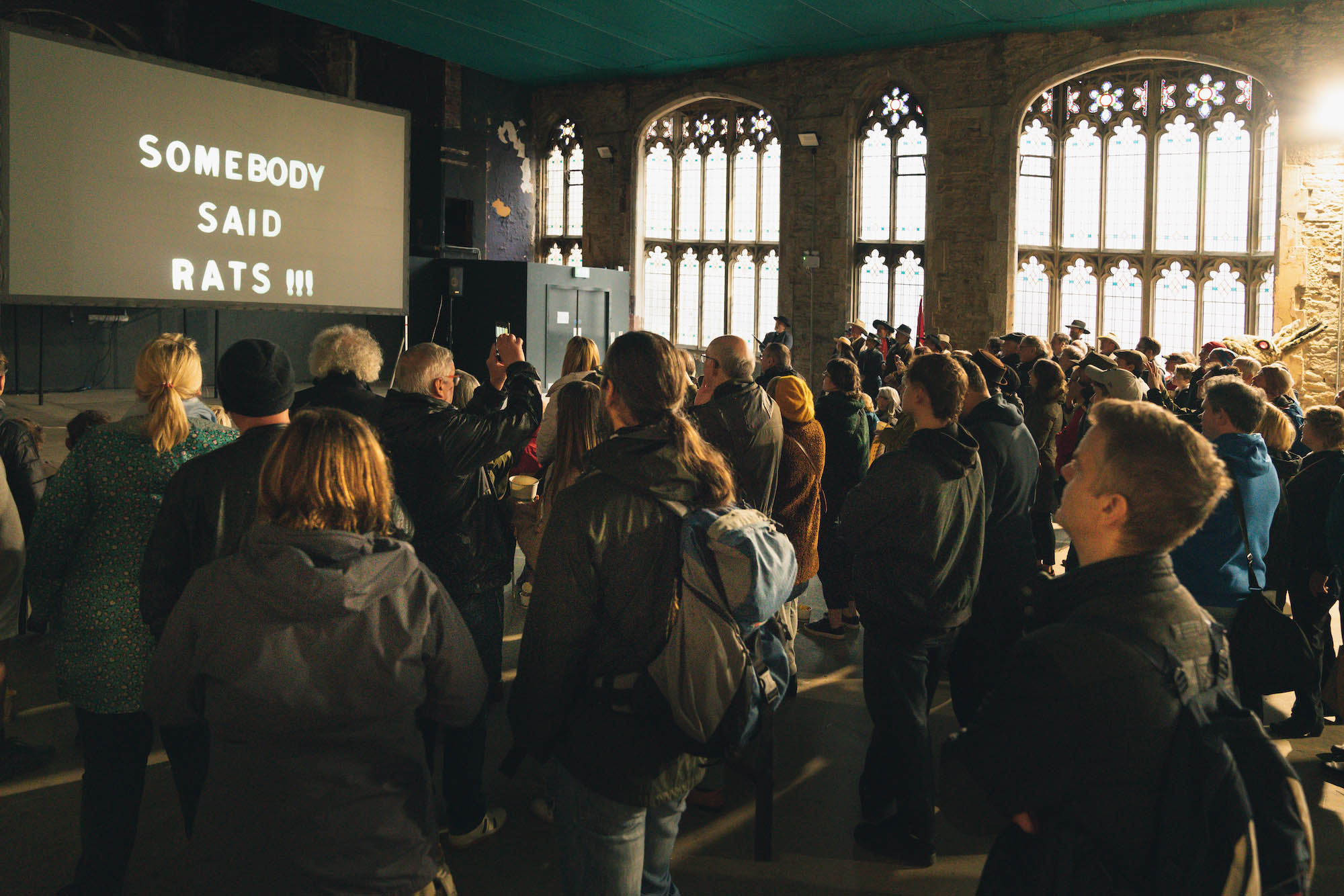
The Worlds First Western, 2019 Blackburn. Artist Jamie Holman. Presented as part of British Textile Biennial 2019.
Photographer Richard Tymon
At the start of my research, I spent a morning talking to Rachel from Mill Hill who had been to the early parties in Blackburn in the late 80s early 90s and had experienced the transformation of working class culture from football hooliganism to 10,000 people dancing together in an empty mill. We tracked the long history of transformation in the heritage and culture of Lancashire, talking about the Lancashire witches and how they were arrested for gathering at Malkin Tower. How the witches said they could transform into hares and that I actually believed that they could do it.
Rachel agreed, confirming that she had also witnessed the transformative and magical power of the working-class people of Lancashire in those mass gatherings in the 90s. I wondered if that’s what had been happening since the mills and factories had landed on us and reshaped our countryside? We have always been trying to transform, to get back to where we once were from. To become wild again. To be free.
We talked about legends of witches transforming into hares.
That night was the first night that I too, transformed.
Lost in the research I was carrying out and the discoveries and connections I was making, I felt creatively propelled through this stage of the commission.
I vividly remember the meeting where I told the Super Slow Way team about my ideas and the work I was making. I talked about time travelling through the mill spaces and transforming into a hare in my sleep.
I told them that James Sharples, William Billington and Mitchell and Kenyon, alongside the living community, were talking to me, guiding the research - that when we gathered, we became powerful. I told them I was making Acid House banners, stained glass, a film and new pieces guided by the artists of the past and that I would reveal them when they were ready.
They could have been forgiven for considering this problematic - it is quite a departure from “I don’t know what I’m going to make….”
Neither Laurie or Jenny blinked.
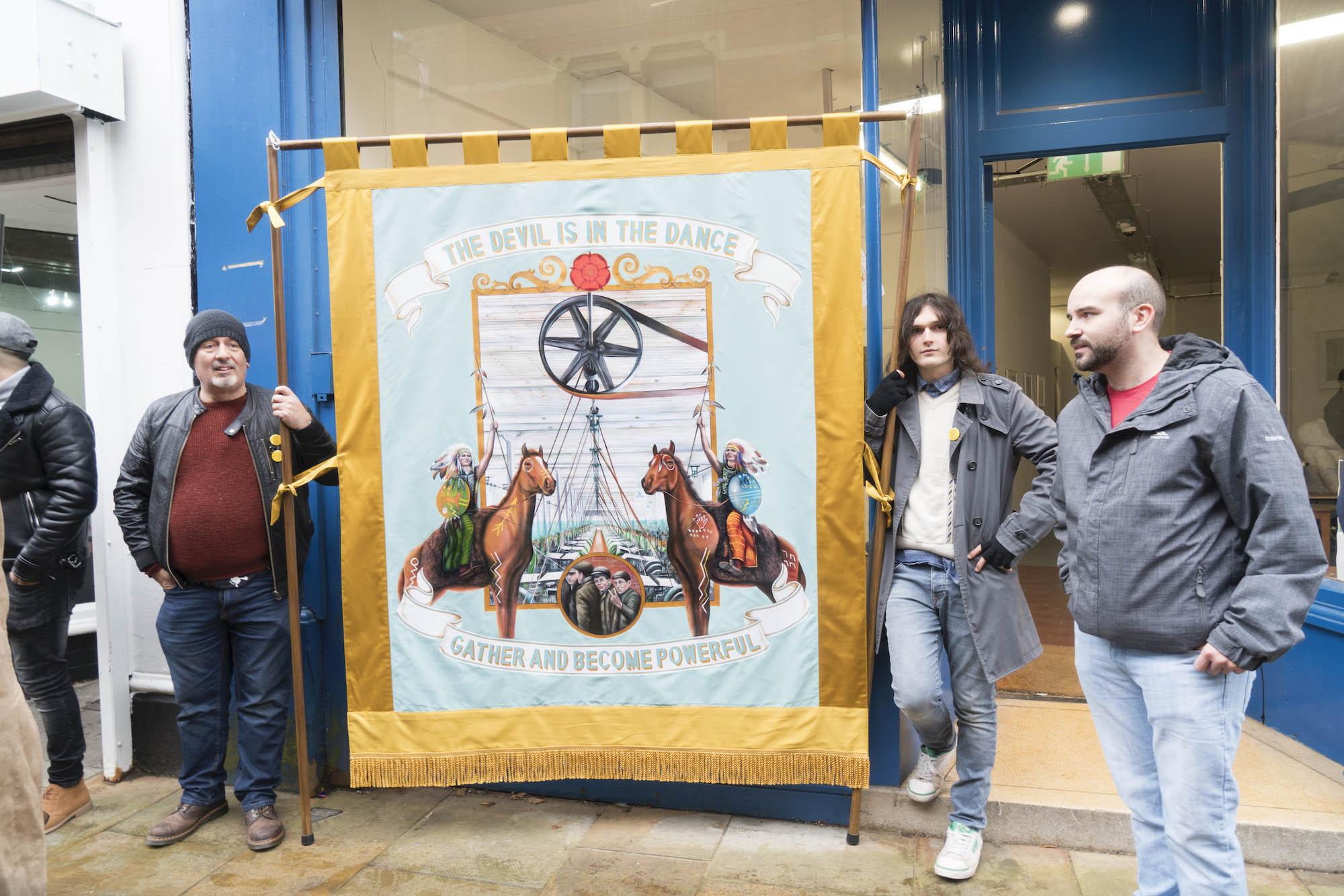
The Worlds First Western, 2019 Blackburn. Artist Jamie Holman. Presented as part of British Textile Biennial 2019.
Photographer Richard Tymon
The impact of working with Super Slow Way on my own practice has been profound. A transformation of my own. I have established a practice characterised by collaborating with producers and other artists on a range of outputs including the running of Prism Contemporary in Blackburn and providing paid work for artists, students and producers across the whole Biennial. This practice and my research continues, new works are being made and Super Slow Way have committed to working with me until 2021 as an associate artist. In truth, the work never stopped.
Since BTB Alex Zawadzki, who produced and curated my BTB exhibition, ‘Transform and Escape the Dogs,’ and I have produced an archive of oral histories from the Blackburn parties, entitled Flashback. The intention was to develop an archive that would function in a similar way to the Mitchell and Kenyon archive and keep telling these stories, before they become lost. The work that would normally stop at the end of a commission continues, supported by Super Slow Way with funding from National Lottery Heritage Fund.
I am still excited by the proposition that there are kids on the football terraces of Italy wearing the adidas ‘Sett End’ shoe who maybe don’t know that this was a pub on a council estate in Shadsworth, Blackburn, famous for being at the centre of Acid House in Blackburn and that the game they are watching emerged among these mill towns.

These, and all of our shared stories, are important because without them, the headlines and Panorama programmes risk becoming a self-fulfilling prophecy. Most importantly, these stories propose Blackburn as a place where art and culture happens first.
These, and all of our shared stories, are important because without them, the headlines and Panorama programmes risk becoming a self-fulfilling prophecy. Most importantly, these stories propose Blackburn as a place where art and culture happens first. Super Slow Way choose to make this visible and mix it up with world class international art and culture. This is as it should be and as it has been in the past. The story of cotton is one of migration, a migration of people, communities and cultures and the unexpected outcomes that manifest when groups of people gather. It reminds us that when we gather, we become powerful. From the football terraces, to the cotton exchange, from factory gates to factory records, from the Hacienda to Hollywood.
When we gather, we become powerful. We transform and escape the dogs.
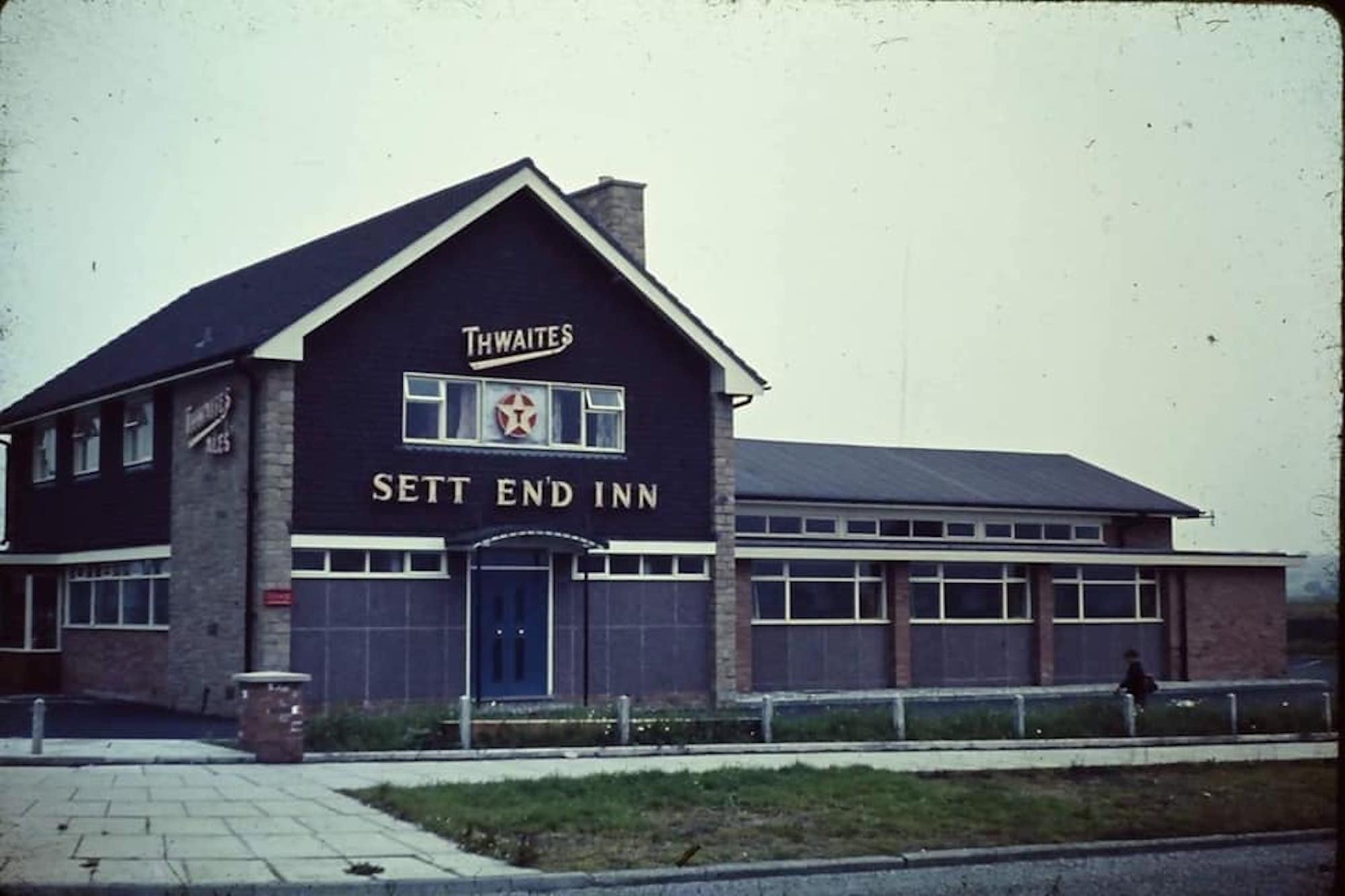
Sett End, Blackburn
Image courtesy of Bob Singh
Articles

